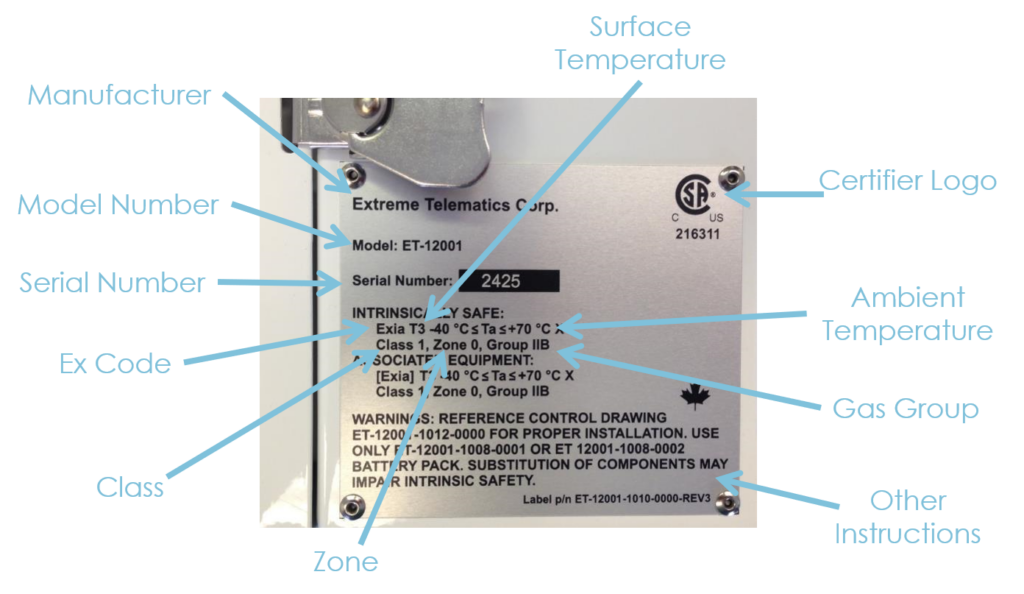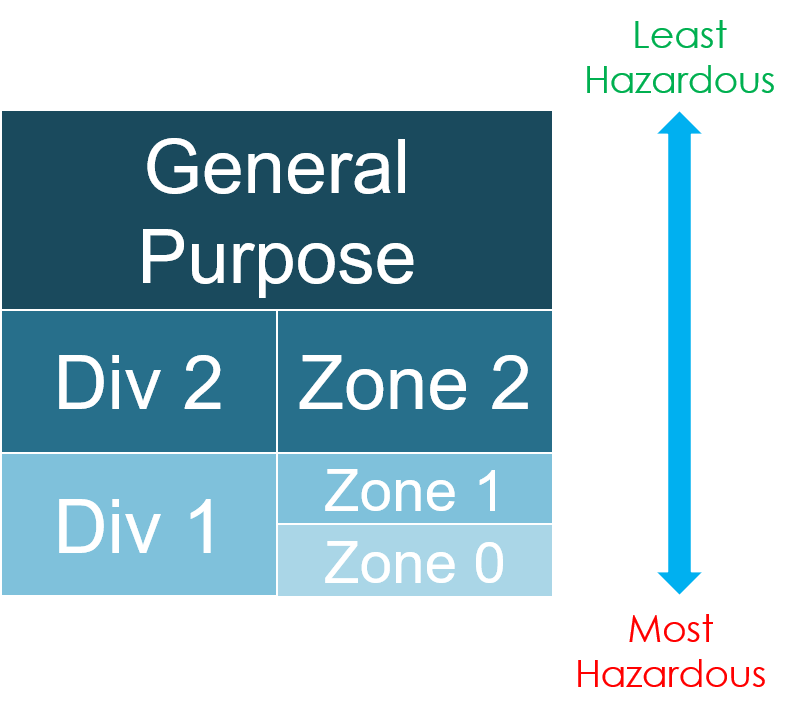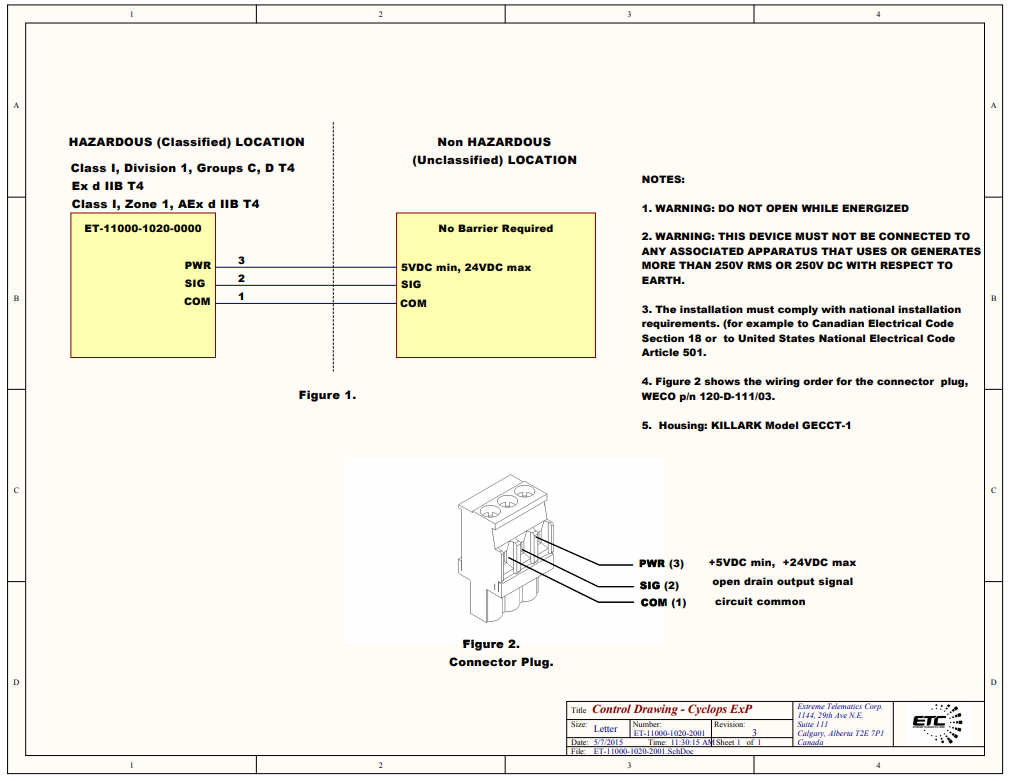There is a lot of technical information on a certification label that helps to identify the area and conditions in which an electronic product can be used.
Training Course
All of the information below is covered in a training course called “Understanding Hazardous Locations Basics” which is available on our training page.
Label Information

Certifier
This identifies the lab that was used to test and certify the product as safe. Follow the links below to navigate to the lookup for certification files based on the certifier.
Intertek (ETL)
Class
Each class identifies a different type of flammable material.
Class I
This class refers to flammable gases or vapors and is typically seen in Oil and Gas
Class II
This class refers to combustible or electrically conductive dust. It is typically seen in farming (i.e. Grain Dust)
Class III
This refers to ignitable fibers or flyings in the air and is typically seen in manufacturing.
Zone and Division
Products can either be installed in a general purpose area or a hazardous area. These areas are broken up into different categories that are called Zones or Divisions depending on the standard used.

Zones
Zone is used in the newer unified, international standard IEC 60079.
Zone 0
Explosive atmosphere continuous
Zone 1
Explosive atmosphere likely
Zone 2
Explosive atmosphere not normal
Divisions
Division or Div has been used historically across a wide variety of standards in many different regions.
Div 1
Hazard exists in normal conditions
Div 2
Hazard exists in abnormal conditions
Ex Codes
The IEC 60079 standard is broken into a number of subsections. The Ex Code is used to distinguish type of protection.
Ex ia
Intrinsically safe for zones 0, 1, 2
Ex ib
Intrinsically safe for zones 1, 2
Ex ic
Intrinsically safe for zone 2
Ex d
Flameproof (explosion proof) zones 1, 2
Ambient Temperature
The temperature code specifies the maximum surface temperature of the product which helps set the ambient temperature rating of a product. The lower the surface temp, the higher the allowable ambient temp.
The major steps are identified with a number, but there are several steps in between identified with letter A – D.
| Temperature Code | Surface Temperature |
| T2 | 300 C/572 F |
| T3 | 200 C/392 F |
| T4 | 135 C/275 F |
Gas Group
The gas group identifies the types of gases a product is approved for.
| Zone Gas Group | Div Gas Group | Gases |
| IIA | D | Propane, Methane |
| IIB | C | Ethylene, Hydrogen Sulfide |
| IIC | A + B | Hydrogen, Acetylene |
IIC is the most severe, while IIA is the least severe. A product can be installed in an area with the designated gas group or a less severe group.
Other Instructions
This often provides additional warnings and points the reader to the appropriate control drawing which contains more detail about the safe us of the product.
Control Drawing

A control drawing must be provided by the manufacturer that:
- Identifies Acceptable Installation Zones
- Details all connections with equipment outside the Zone
- Lists entity parameters
- Ratings for each connection
- Includes Voltage, Current, Power, Capacitance, and Inductance
- Warnings and special notes
